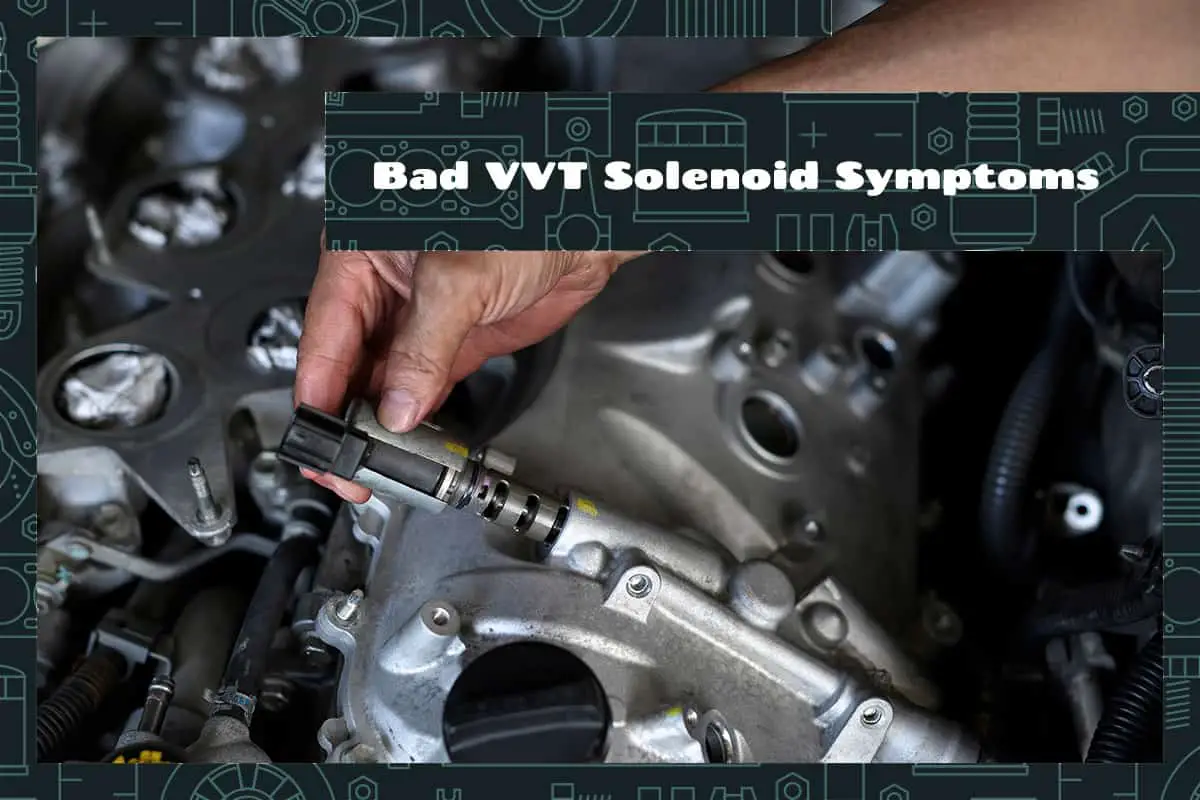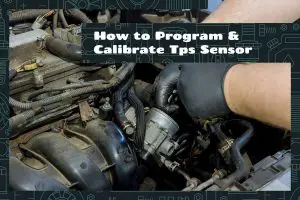The Variable Valve Timing (VVT) system in a car enhances engine performance, increases fuel efficiency, and reduces emissions. At the heart of this system lies the VVT solenoid, an electro-hydraulic valve that controls and adjusts the supply of oil to the VVT system based on the engine’s speed, load, and temperature. Understanding the workings of the VVT solenoid and recognizing signs of a faulty one is critical to maintaining your car’s health.
You can usually tell whether your car has a bad VVT solenoid by the following symptoms:
- Difficulty starting the engine
- Reduced fuel efficiency
- Engine stalling or running rough
- Check Engine Light activation
In this article, we will take a closer look at the VVT solenoid, explaining its functionality, exploring how to identify when it’s failing, and discussing ways to address such issues.
A Quick Intro to VVT Solenoids
The VVT solenoid is an electro-hydraulic valve that manages the flow of oil to the VVT system. It’s an ingenious design that combines electrical and hydraulic operations. The solenoid receives an electrical signal from the engine control unit (ECU), triggering a plunger that adjusts the flow of oil.
This oil movement, in turn, adjusts the timing of the intake or exhaust valves, allowing the engine to run more efficiently under different conditions.
The VVT solenoid is usually located near the front of the engine, often adjacent to the timing cover. Its location may vary depending on the vehicle’s make and model. It’s usually easy to identify due to its electrical connector sticking out.
The Role of VVT Solenoids in Engine Performance and Fuel Efficiency
The VVT solenoid plays a pivotal role in enhancing engine performance. By adjusting the valve timing, the VVT solenoid optimizes engine power and torque. When you’re cruising at low speeds, the solenoid adjusts the valves for better fuel efficiency. Conversely, when you’re accelerating or driving at high speeds, it optimizes the valves for peak performance.
Another key benefit of VVT solenoids is enhanced fuel efficiency. By continuously adjusting the valve timing based on engine conditions, the solenoid ensures the most efficient use of fuel at all times.
When driving at low speeds, the solenoid can retard the valve timing, reducing fuel consumption. On the other hand, during high-speed driving or heavy acceleration, the solenoid advances the valve timing, ensuring the engine gets maximum power without wasting fuel.
The Normal Operation of a Healthy VVT Solenoid
A healthy VVT solenoid operates seamlessly, adjusting valve timing in response to engine conditions. When the engine is running, the ECU continuously monitors various factors like speed, load, and temperature. It then sends electrical signals to the VVT solenoid, instructing it to adjust the valve timing accordingly.
The solenoid responds to these signals by controlling the oil flow to the VVT system. When more power is needed, it increases the oil flow, advancing the valve timing. Conversely, when less power is required, it reduces the oil flow, retarding the valve timing. This dynamic adjustment ensures optimal engine performance and fuel efficiency.
The Lifespan of a VVT Solenoid
When it comes to vehicle maintenance, understanding the lifespan of various components can be a real game-changer. The VVT solenoid, an integral part of your car’s engine management system, is no exception.
Average Lifespan of a VVT Solenoid
The VVT solenoid, like many other engine components, doesn’t have a definitive lifespan, though it’s designed to last the lifetime of your vehicle. On average, a VVT solenoid can last between 70,000 to 100,000 miles, aligning with most scheduled major service intervals.
However, this is a broad approximation and can vary significantly depending on numerous factors such as driving conditions, maintenance practices, and overall vehicle health.
Factors Affecting the Lifespan of a VVT Solenoid
One of the primary elements is the quality of the engine oil used. High-quality engine oil is vital for the VVT solenoid’s smooth operation, as it ensures the hydraulic function of the solenoid isn’t compromised.
Furthermore, the driving conditions play a crucial role. Frequent driving in harsh conditions such as high heat, cold, dust, or stop-and-go traffic can accelerate the wear on the solenoid. Also, the type of driving can affect the solenoid’s lifespan. Regular high-speed driving or aggressive acceleration can place extra stress on the solenoid, potentially leading to premature failure.
Lastly, the overall health and maintenance of your vehicle are key factors. An engine with a faulty component can indirectly lead to a shortened solenoid lifespan. Regular maintenance and check-ups ensure that all components, including the VVT solenoid, are in good working condition.
Common Symptoms of a Bad VVT Solenoid
Being able to identify the common symptoms of a faulty VVT solenoid can save you from expensive repairs and keep your vehicle running smoothly.
1. Difficulty in Starting the Engine
A properly functioning solenoid adjusts the timing of the intake and exhaust valves according to the engine’s operating conditions. If the VVT solenoid fails, it can disrupt this valve timing, making the engine hard to start. This symptom is often more apparent when the engine is cold, such as first thing in the morning.
2. Noticeable Decrease in Fuel Efficiency
The VVT solenoid adjusts the valve timing to ensure optimal fuel usage, maximizing miles per gallon. If the solenoid is faulty, it can cause the engine to consume more fuel, resulting in a noticeable decrease in fuel efficiency.
3. Engine Stalling or Running Rough
When the solenoid fails, it can disrupt the valve timing, leading to imbalanced engine operations. This imbalance can manifest as rough idling, engine misfire, or even unexpected stalling while driving.
4. Check Engine Light Activation
When a component fails or performs sub-optimally, the ECU activates the Check Engine Light on your dashboard. If your VVT solenoid is malfunctioning, it’s likely this light will illuminate, though it could be caused by an assortment of other unrelated issues.
Solutions and Repairs for Bad VVT Solenoids
In the world of automotive care and maintenance, being proactive can go a long way. Let’s explore the common solutions and repairs for bad VVT solenoids.
1. Professional Diagnostic Test
Modern vehicles have a sophisticated network of sensors and control units that monitor various engine operations. When a problem arises, a diagnostic test can pinpoint the exact issue.
In the case of a bad VVT solenoid, the diagnostic test can confirm its failure by checking for specific error codes related to the VVT system. These codes, stored in the ECU, can provide the mechanic with critical information about the nature and severity of the problem.
2. VVT Solenoid Cleaning
Sometimes, the issues with the VVT solenoid might not necessitate a replacement. The solenoid might simply be clogged with debris or dirty engine oil. In such cases, cleaning the solenoid can restore its function.
The process involves removing the VVT solenoid from the engine and thoroughly cleaning it with a special solenoid cleaner. This cleaner can dissolve and remove the oil sludge and debris that might be obstructing the solenoid’s operation. After cleaning, the solenoid is reinstalled and tested to ensure it’s functioning correctly.
3. VVT Solenoid Replacement
If the VVT solenoid is damaged or has failed completely, it will likely need to be replaced. Replacement involves removing the faulty solenoid and installing a new one. It’s a relatively straightforward process but should be done by a professional to ensure proper installation and function.
VVT solenoids are vehicle-specific, meaning the replacement part must be compatible with your vehicle’s make, model, and engine type. Always ensure that the replacement solenoid is of high quality to guarantee longevity and optimal performance.
4. Regular Vehicle Maintenance
While not a solution or repair per se, regular vehicle maintenance is key in preventing issues with your VVT solenoid and other engine components.
This maintenance includes routine oil changes with high-quality engine oil, regular check-ups, and driving sensibly to avoid undue stress on the engine. Sticking to a regular maintenance schedule can keep your VVT solenoid and your entire engine running smoothly for miles to come.






